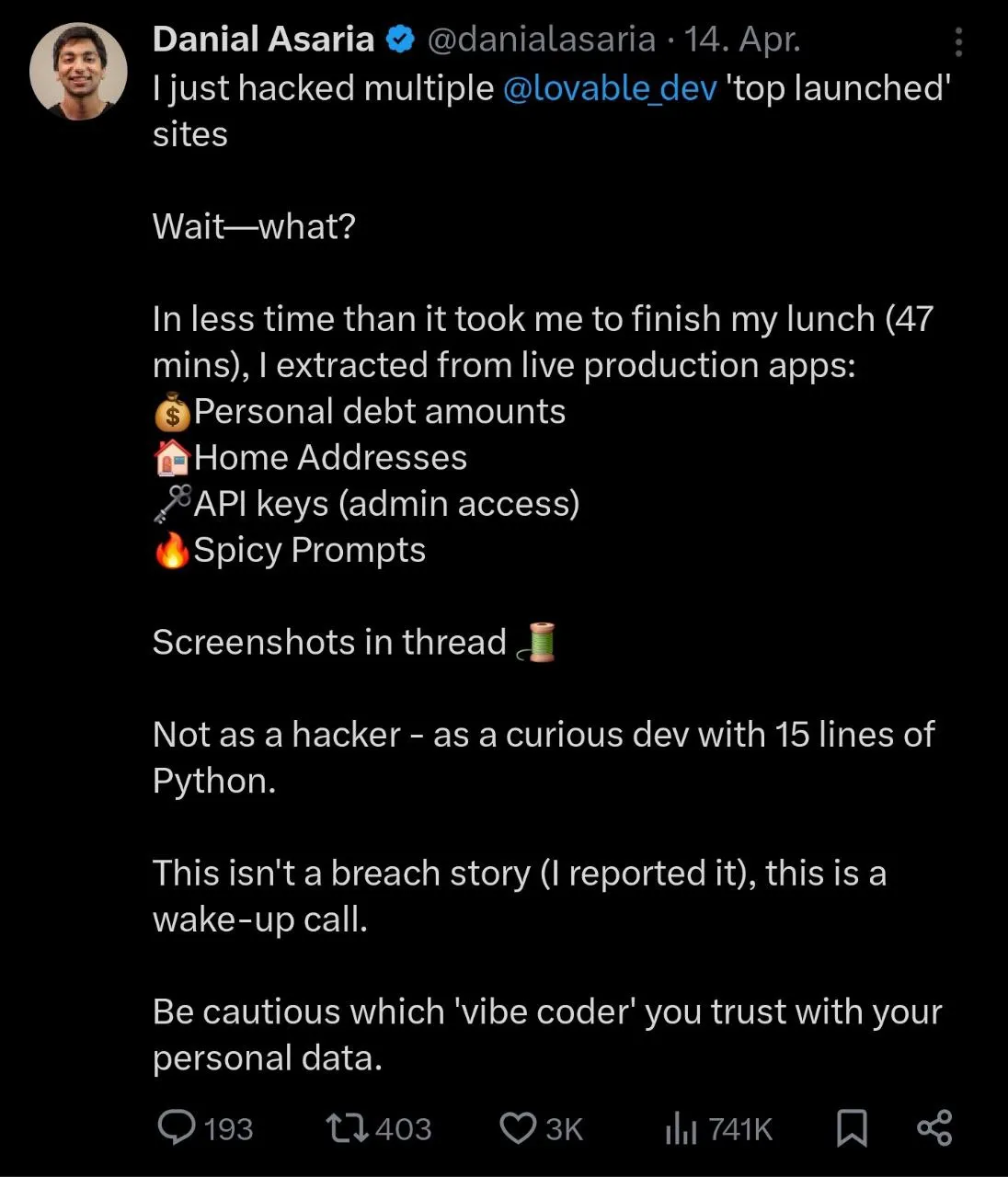In 2024 and into 2025, something wild happened in tech. People without any coding experience started building real software products—sometimes overnight. With the rise of AI coding assistants like GPT-4, Claude, and Lovable etc., you didn’t need to know how to code. You just needed a good prompt and an idea.
This phenomenon became known as vibe coding—the act of building software by “vibing” with AI rather than engineering it with intention. It felt magical. For many, it was magical. The distance between idea and prototype had never been shorter.
But as the hype faded and the codebases got messy, many of those same dreamers ran into something they weren’t prepared for:
Reality.
What Makes Vibe Coding So Tempting

It’s easy to see why vibe coding exploded. It’s empowering. It gives non-technical founders a direct channel to creation. For the first time, the tools of software weren’t locked behind gatekeeping, jargon, or job titles. You could just ask the machine to build—and it would.
And for simple things—landing pages, dashboards, early MVPs—it worked. The early dopamine hit was incredible. You could go from sketch to screen in hours.
But just because something runs doesn’t mean it’s built right. And that’s where the danger begins.
What You Don’t Ask For, AI Won’t Build
This is the core problem no one warns you about: AI only builds what you specify. It won’t question your decisions, warn you about missing security practices, or refactor your architecture.
You don’t mention user roles? It builds everything as if every user is the same.
No mention of rate limits or access control? It leaves the gate wide open.
Don’t specify data privacy constraints? It just assumes all data is public.
And when things go wrong—when users start growing, when data flows in, when edge cases appear—the software cracks. And sometimes, it breaks in catastrophic ways.
The Tea App: A Case Study in What Can Go Wrong

Just last week, the AI-built Tea app made headlines for all the wrong reasons. After gaining popularity as a casual selfie-sharing platform, it suffered a massive backlash when it was discovered that over 72,000 private selfies had been leaked—not due to a traditional hack, but through "authorised access" that wasn’t properly locked down.
This wasn’t some advanced exploit. This was a permissions oversight. An architectural blind spot. A mistake that someone with software engineering experience might have caught—but AI didn’t.
The leak wasn’t just embarrassing. It was harmful. Trust eroded overnight. Reviews tanked. What began as a fun, low-stakes app ended up as a cautionary tale.
And here’s the kicker: this kind of mistake is incredibly common in AI-generated codebases. Not because AI is flawed, but because it’s obedient. It builds exactly what you tell it—and nothing more.
The Lovable Illusion
This year, Lovable made headlines for reaching $100M ARR faster than any software company in history. Their rise was powered by community-driven building, AI-assisted development, and a vibe that anyone could launch a product in days, not months.
That’s an exciting vision—and a tempting one for non-technical founders. But the darker side of that speed-first, prompt-powered movement came into sharp focus shortly after.
In a now-viral post, developer Danial Asaria exposed just how vulnerable many of these apps were. Using only 15 lines of Python, he accessed private data, admin credentials, and production API keys—from live apps built and launched through Lovable.

“Be cautious which ‘vibe coder’ you trust with your personal data,” he wrote.
It wasn’t a hack—it was a reminder: AI will build what you ask for, not what you forget.
Lovable’s platform isn’t the problem. The culture of launching without architecture is.
If you're building with AI and shipping with vibes alone, this is your warning. Secure what you build—or someone else will find the gaps first.
You're Not Failing. You're Just Not Done Yet.
If you're a non-technical founder who built something with AI, and now you're stuck—you’re not alone. And you're not wrong for starting this way.
You just hit the part where vibes aren’t enough. This is the messy middle. The part where prototypes need structure. Where good ideas need good code.
The exciting news? You’ve already done the hardest part: you started. Now it’s time to bridge the gap between MVP and product. That means tightening up security. Revisiting the architecture. Making sure your dream doesn’t leak 72,000 selfies—or something worse.
From Vibe to Viable

Your idea is worth building right.
Not everyone should make an app on their own—but everyone deserves the chance to bring their idea to life, safely and sustainably.
Let’s take what you’ve built and get it launch-ready. Not from scratch, but from exactly where you are. With care, clarity, and real technical guidance.
Because what starts as a vibe can still become something Lovable.
